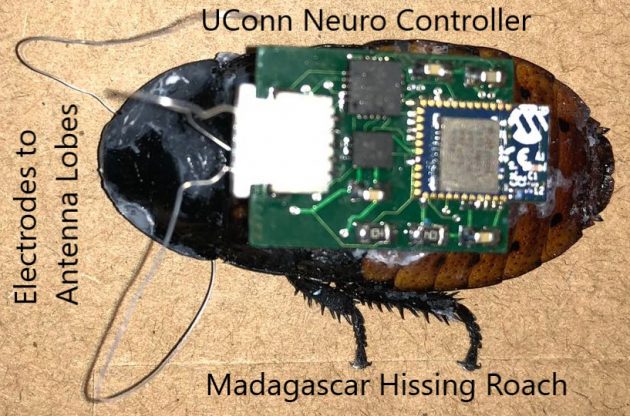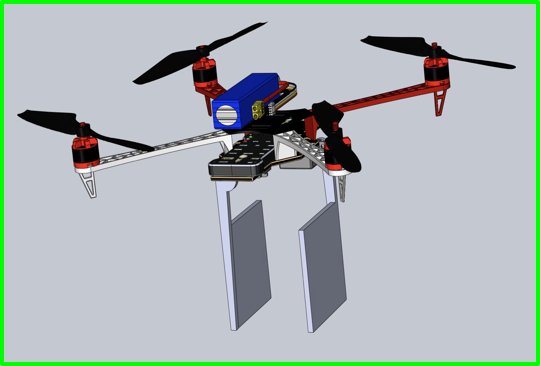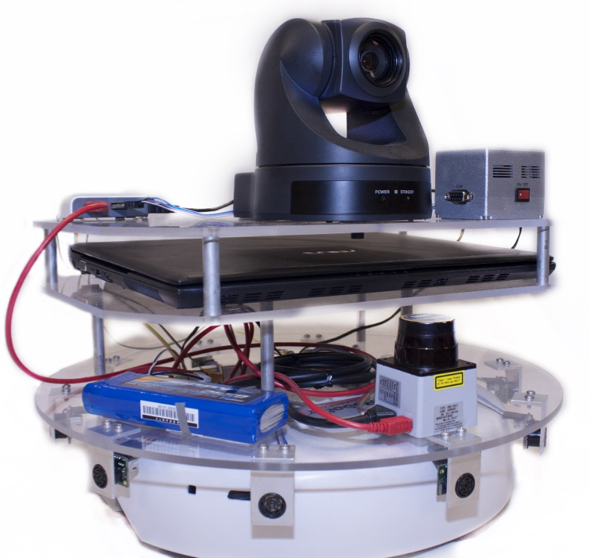Predicting the Future of Robotics
Research in robotics crosses many engineering disciplines, including electrical engineering. Because of this, some University of Connecticut electrical engineering professors are using their unique perspectives to advance robotics research.
Assistant Professor Abhishek Dutta is just one of these professors who specializes in robotics, with an emphasis in biological robotics.
“My hope is to create a bionic robot, as in a biologically constructed robot,” Dutta said.

Dutta works to create cyborgs, which are micro-circuits interfaced with organisms resulting in a controlled organism, which means he also faces challenges with biology.
Recently, Dutta released research related to control of cockroaches through the creation of a newly designed microcircuit. Connecting this small electronic “backpack” to the back of the cockroach, Dutta and his graduate students believe that there are unlimited applications, including use in search-and-rescue missions and national defense.
“My biggest challenge is to run this interdisciplinary lab that relies on as much engineering as much as biology,” he said.
Dutta said he hopes that over the next few years robotics research will advance to create more social robots, and ultimately reach human-like cognition.
If robots are going to reach human-level cognition, artificial intelligence and autonomy would also have to advance, and that is where Associate Professor Shalabh Gupta comes into play. Gupta researches how to improve robots autonomy, which has many different aspects, he said.
“The biggest challenge for autonomy is when the robot is in an unknown environment and the robot doesn’t know its surroundings. When you leave a robot in an unknown scenario it has to first learn the scenario and then completely make its own decisions for navigating and performing its tasks. The challenge is to design algorithms that can optimize this decision making process in the robots,” Gupta said.
When it comes to the artificial intelligence of these robots, Gupta said that some of these robots are already smarter than humans. However, integration of the learning process with that of control and decision is still a challenge.
Once you place the robot in an environment with other humans and moving obstacles, the decision-making  process becomes more challenging.
process becomes more challenging.
“It has to learn human patterns,” Gupta said, “We are trying to reach how humans think, but we don’t know how to replicate that. The data is big, but we have to figure out how to make sense of that data.”
To learn human patterns, these robots need to be collaborative and safe. Professor Ashwin Dani specializes in this area, and he said he sees big advancements in the collaboration area in the near future.
“Human-robot collaboration, design and development of collaborative and safe robots, building intelligent machines using advances in machine learning and artificial intelligence, are some of the things that are happening in the robotics and automation community,” said Dani.
 For challenges in these advancements, Dani cited infrastructure as the main obstacle for robotics advancement.
For challenges in these advancements, Dani cited infrastructure as the main obstacle for robotics advancement.
“For any robotics research, infrastructure is most critical. It takes time to build the right infrastructure and support system to carry out long-term research,” said Dani.
Written by Ryley McGinnis
Categories: News
Published: February 21, 2019
Available Archives

